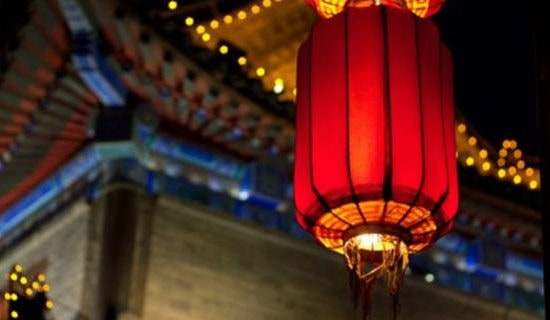春节起源是什么
在春节期间,我国的汉族和一些少数民族都要举行各种庆祝活动。以下是小编收集的春节起源,欢迎查看!

春节起源1
我国农历年的岁首称为春节。是我国人民最隆重的传统节日,也象征团结、兴旺,对未来寄托新的希望的佳节。据记载,我国人民过春节已有4000多年的历史。关于春节的起源有很多说法。
相关来历我国历代元旦的日期并不一致:夏朝用孟春的元月为正月,商朝用腊月(十二月)为正月。秦始皇统一六国后以十月为正月,汉朝初期沿用秦历。公元前104年(元封六年),经司马迁等人提议,汉武帝下令改定历法。公元前104年,天文学家落下闳等人制订了《太初历》,将原来以十月为岁首改为以孟春正月为岁首,后人在此基本上逐渐完善为我们当今使用的阴历(即农历),落下闳也被称为“春节老人”。此后我国一直沿用夏历(阴历,又称农历)纪年,直到清朝末年,长达2080年。春节不同时代有不同名称。在先秦时叫“上日”、“元日”、“改岁”、“献岁”等;到了两汉时期,又被叫为“三朝”、“岁旦”、“正旦”、“正日”;魏晋南北朝时称为“元辰”、“元日”、“元首”、 “岁朝”等;到了唐宋元明,则称为“元旦”、“元 ”、“岁日”、“新正”、“新元”等;而清代,一直叫“元旦”或“元日”。
现代民间习惯上把过春节又叫做过年。其实,年和春节的起源是很不相同的。
那么"年"究竟是怎么样来的呢?民间主要有两种说法:一种说的是,古时候,有一种叫做"年"的凶猛怪兽,每到腊月三十,便窜村挨户,觅食人肉,残害生灵。有一个腊月三十晚上,"年"到了一个村庄,适逢两个牧童在比赛牛鞭子。"年"忽闻半空中响起了啪啪的鞭声,吓得望风而逃。它窜到另一个村庄,又迎头望到了一家门口晒着件大红衣裳,它不知其为何物,吓得赶紧掉头逃跑。后来它又来到了一个村庄,朝一户人家门里一瞧,只见里面灯火辉煌,刺得它头昏眼花,只好又夹着尾巴溜了。人们由此摸准了"年"有怕响,怕红,怕光的弱点,便想到许多抵御它的方法,如放炮竹,于是逐渐演化成今天过年的风俗。
另一种说法,我国古代的字书把"年"字放禾部,以示风调雨顺,五谷丰登。由于谷禾一般都是一年一熟。所"年"便被引申为岁名了。
春节起源2
春节,是农历的岁首,也是我国古老的传统节日。古代过“年”不是在腊月二十九日或三十日,而是在“蜡日”,即后来的“腊八”。南北朝以后,把“蜡祭”移至岁末。到了民国时 ,改用阳历,才把阴历年叫“春节”,因为春节一般都在“立春”前后。
春节是我国最盛大、最热闹的.一个古老传统节日。俗称“过年”。按照我国农历,正月初一古称元日、元辰、元正、元朔、元旦等,俗称年初一,还有上日、正朝、三朔、三朝、三始、三元等别称,意即正月初一是年、月、日三者的开始。
春节,顾名思义就是春天的节日。春天来临,万象更新,新一轮播种和收获季节又要开始。 人们有足够的理由载歌载舞来迎接这个节日。于是,节前就在门脸上贴上红纸黄字的新年寄语。
春节的另一名称叫过年。“年”是什么呢?是一种为人们带来坏运气的想象中的动物。“年”一来。树木凋蔽,百草不生;“年”一“过”,万物生长,鲜花遍地。“年”如何才能过去呢?需用炮竹轰 ,于是有了燃炮竹的习俗。1993年,北京市人民政府颁布了禁放烟花爆竹的法律,使这一沿续了几百年的习俗成为历史。
春节是个亲人团聚的节日,这一点和西方的圣诞节很相似。离家的孩子这时要不远千里回到父母家里。真正过年的前一夜叫“除夕”,又叫“团圆夜”,“团年”。传统的庆祝活动则从除夕一直持续到正月十五元宵节。喜庆气氛要持续一个月。 正月初一前有祭灶、祭祖、 扫除污秽。三十日要贴门神、春联、挂旗、吃饺子、放炮竹,除夕“守岁”等 仪 式;正月初一晚辈向长辈拜年,然后至亲友家贺年。亲友第一次见面时,说些“恭贺新喜”、“恭喜发财”、“恭喜”、“过年好”等话,互相祝贺。
英文版
The Origin of Chinese New Year
The Chinese New Year is now popularly known as the Spring Festival because it starts from the Begining of Spring (the first of the twenty-four terms in coodination with the changes of Nature). Its origin is too old to be traced. Several explanations are hanging around. All agree, however, that the word Nian, which in modern Chinese solely means "year", was originally the name of a monster beast that started to prey on people the night before the beginning of a new year.
One legend goes that the beast Nian had a very big mouth that would swallow a great many people with one bite. People were very scared. One day, an old man came to their rescue, offering to subdue Nian. To Nian he said, "I hear say that you are very capable, but can you swallow the other beasts of prey on earth instead of people who are by no means of your worthy opponents?" So, it did swallow many of the beasts of prey on earth that also harrassed people and their domestic animals from time to time.
After that, the old man disappeared riding the beast Nian. He turned out to be an immortal god. Now that Nian is gone and other beasts of prey are also scared into forests, people begin to enjoy their peaceful life. Before the old man left, he had told people to put up red paper decorations on their windows and doors at each year's end to scare away Nian in case it sneaked back again, because red is the color the beast feared the most.From then on, the tradition of observing the conquest of Nian is carried on from generation to generation. The term "Guo Nian", which may mean "Survive the Nian" becomes today "Celebrate the (New) Year" as the word "guo" in Chinese having both the meaning of "pass-over" and "observe". The custom of putting up red paper and firing fire-crackers to scare away Nian should it have a chance to run loose is still around. However, people today have long forgotten why they are doing all this, except that they feel the color and the sound add to the excitement of the celebration.
【春节起源是什么】相关文章:
春节黑板报资料:春节起源与对联01-09
中国元旦的起源10-11
感恩节的起源10-12
西班牙“火节”的起源09-11
“圣诞节”的起源10-22
关于元旦的起源变迁08-06
圣诞节的起源传说10-22
万圣节的起源10-17
腊八节的起源10-02
“仲夏节”的起源和历史09-05
